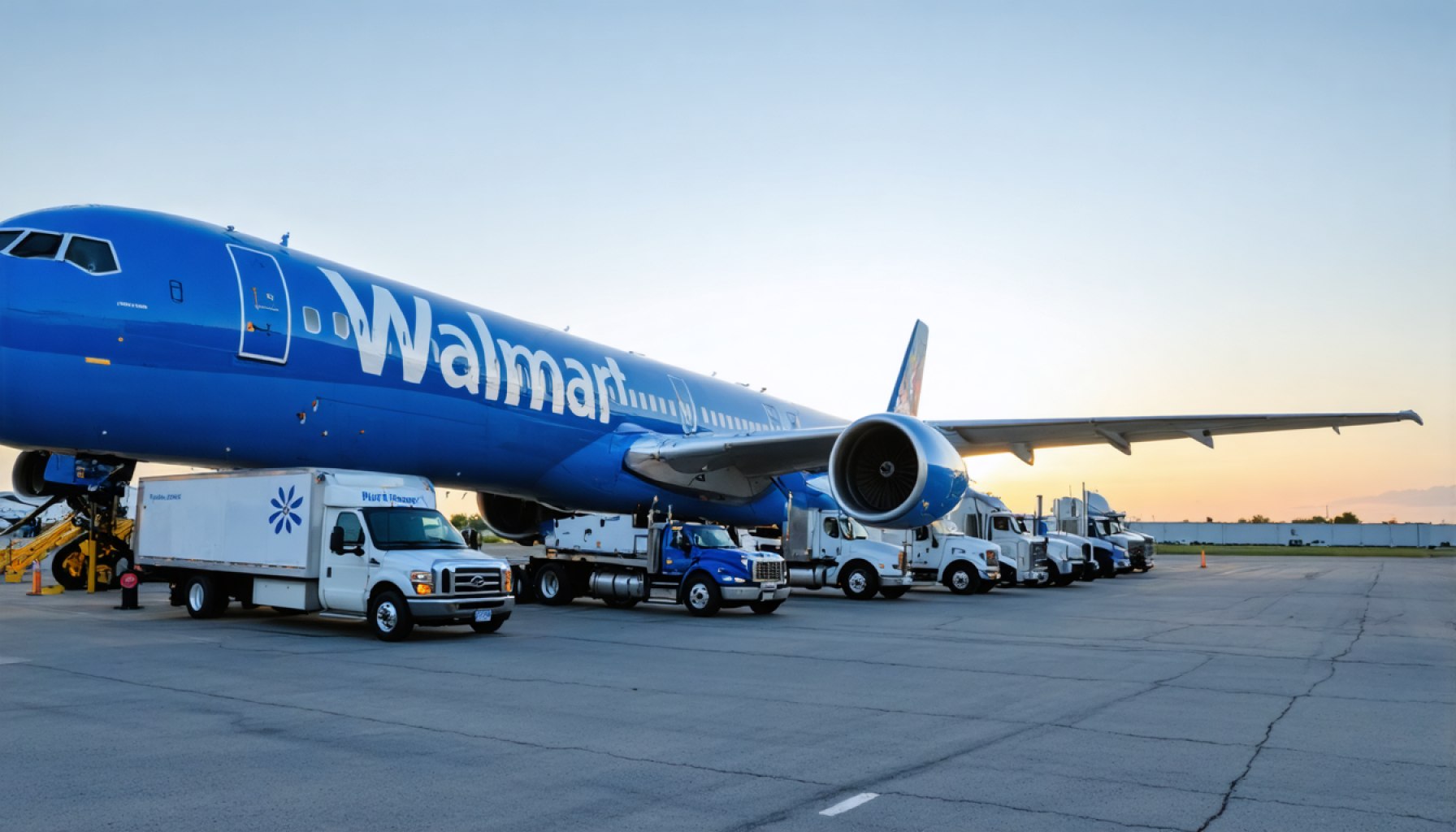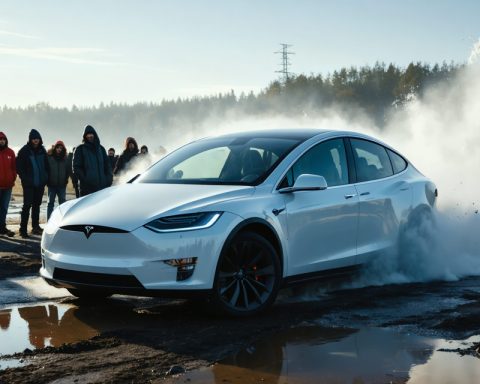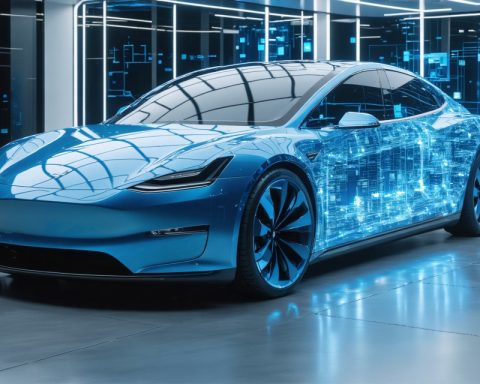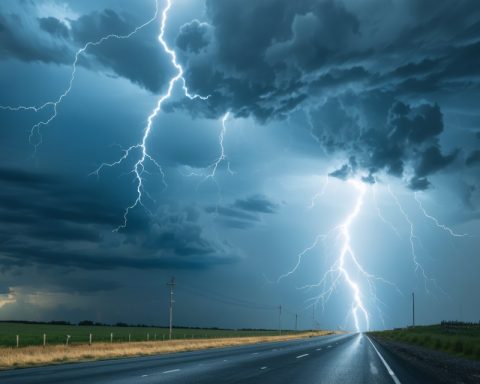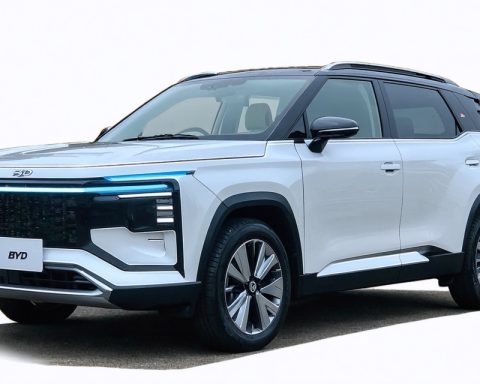- Pilot, partnering with General Motors and EVgo, has established over 130 fast-charging hubs in 25 states, bolstering EV travel across the U.S.
- Strategically located Pilot and Flying J centers offer high-power EV chargers, modern amenities, and convenience for road travelers.
- EVgo’s advanced technology, including 350 kW charging speeds and Plug and Charge simplicity, enhances user experience.
- By spring 2025, key routes like Minneapolis to Milwaukee and Detroit to Cleveland will feature these fast-charging stations.
- Walmart integrates fuel and convenience services, expanding infrastructure to over 450 locations to meet modern travel demands.
- The shift towards integrated fuel and charging solutions makes them essential for future travel needs.
- Pilot, EVgo, and Walmart’s initiatives are leading the way in creating efficient, sustainable travel options for all drivers.
Electric cars, once an ambitious vision, are now carving paths through America’s heartlands. In a bold leap forward, Pilot has crossed a significant threshold in its partnership with General Motors and EVgo, stitching over 130 fast-charging hubs across 25 states into the fabric of the nation. This vast web of charging stations envelops key highways and bustling interstates—enabling electric vehicle (EV) travelers to traverse the U.S. with newfound ease and confidence.
Picture your next road trip: gliding down I-75 from Michigan’s rolling landscapes to Georgia’s southern charm, stopping along the way at strategically positioned Pilot and Flying J travel centers. They are no longer just roadside gas stations but beacons of a new era in transportation, offering a glimpse into the future with their lounges, free Wi-Fi, modern restrooms, and quick-service restaurants. Here, high-power chargers grace their lots, where you can top up your EV’s battery in the time it takes to enjoy a quick bite.
EVgo’s state-of-the-art technology—charging speeds up to 350 kW and the seamless Plug and Charge system—ensures that the experience is swift and hassle-free. By spring 2025, these charging stations will dot regional arteries like Minneapolis to Milwaukee, Detroit to Cleveland, and beyond, revolutionizing electric travel.
In parallel with Pilot’s endeavor, the retail giant Walmart is also reshaping its offerings to meet modern demands. Enhancing its Fuel and Convenience services, Walmart is deftly blending fuel economy with convenience. Imagine a Walmart where along with groceries or mid-trip snacks, you can refuel your vehicle at competitive prices. The expansion of Walmart’s infrastructure to over 450 sites showcases a meticulous strategy to maintain its dominance by embracing the duality of retail and refueling.
These moves underscore a pivotal shift: Incorporating fuel and electric charging within a single pit stop is no longer a luxury—it’s a necessity. As these corporations polish the convenience of their physical locations, they cater to an audience that values efficiency and practicality.
The takeaway is profound: The future of travel lies in integrated solutions that cater to both traditional and electric vehicle drivers, offering value at every pit stop. As Pilot, EVgo, and Walmart set the pace, they not only enhance America’s roadways but weave a more sustainable, customer-centric tapestry of travel. Amidst the revving engines and quiet hum of electric motors, a new journey unfolds—one marked by collaboration, innovation, and the promise of the open road.
Discover How America’s Heartland is Transforming with Electric Vehicle Charging Networks
Expanding the Electric Highway: Key Facts and Insights
Electric vehicles (EVs) are no longer just a vision for the future; they are an integral part of America’s transportation landscape, particularly with the strategic expansions from companies like Pilot, General Motors, and EVgo across the nation’s heartlands. Here are some additional insights and trends that were not fully explored in the source article:
How-To Steps & Life Hacks for EV Travel
1. Plan Your Route: Utilize apps like PlugShare or A Better Routeplanner to find charging stations along your route.
2. Optimize Charging Stops: Combine charging breaks with meal times or restroom breaks to make efficient use of time.
3. Stay Updated on Charging Networks: Regularly check for updates on your preferred charging network’s app for new stations or promotions.
Real-World Use Cases
– Cross-Country Travel: The expansion of EV charging hubs makes coast-to-coast travel more feasible and convenient for EV owners.
– Local Commutes: In urban areas, increased charging infrastructure supports everyday commuting without the fear of running low on battery.
Market Forecasts & Industry Trends
– Growing Infrastructure: The EV charging station market is expected to grow at a CAGR of over 30% from 2021 to 2028 (Grand View Research), indicating robust expansion and investment in this sector.
– Retail Giants in EV Charging: With Walmart and others expanding their EV charging facilities, retail locations will increasingly serve as multifunction hubs for both shopping and vehicle refueling.
Features & Specs of Charging Stations
– EVgo’s Charging Technology: Offers charging speeds of up to 350 kW, which can add up to 250 miles of range for some EVs in 15-30 minutes.
– Plug and Charge System: Enables a seamless experience where drivers can plug in their vehicle, and charging begins automatically without requiring additional authentication.
Pros & Cons Overview
Pros:
– Fast charging reduces downtime for travelers.
– Integrated travel centers offer amenities beyond refueling.
– Partnerships expand network coverage rapidly.
Cons:
– Rural areas may still face gaps in coverage.
– Initial high setup costs for companies investing in infrastructure.
Security & Sustainability
– Sustainable Travel: EVs produce zero tailpipe emissions, contributing to reduced air pollution and dependence on fossil fuels.
– Security Concerns: As with any connected technology, cybersecurity measures are crucial to protect drivers’ billing information and personal data.
Insights & Predictions
– Continuing Partnerships: Expect more collaborations between automotive manufacturers and energy companies to further enhance the EV ecosystem.
– Increased User Adoption: As the network of fast chargers expands, it is anticipated that EV adoption rates will rise significantly.
Actionable Recommendations
– Leverage Technology: Use navigation apps that integrate with charging network APIs for real-time updates on station availability.
– Incorporate EVs into Business Fleets: Companies should consider incorporating EVs into their fleets, reducing operational costs and aligning with sustainability goals.
For further insights into the evolving landscape of electric vehicles and charging networks, explore EVgo and Walmart.
As America’s heartlands continue to evolve, integrating innovative travel solutions and efficient EV infrastructure becomes a necessity. What steps will you take to embrace this new era of sustainable travel?
